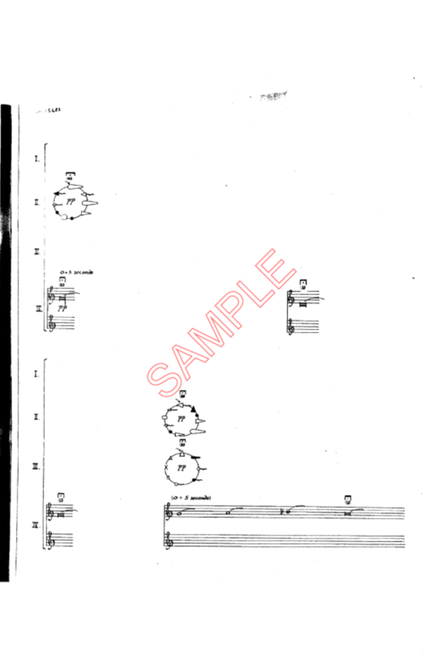Includes score, instructions, and tape (CD). Three or four scores needed for performance.
Want it now? Click here to purchase a digital copy of this product.
Review from Percussive Arts Society:
Musica Tridentina
Martin Farren
In 1967, composer Martin Farren wrote a piece for percussion ensemble titled “Proportions,” in which he does not define the music in a prescriptive sense, but more in a descriptive one. Where one percussionist might easily find a specific type of button gong, another player might have a difficult time filling that request. Farren decided to approach percussion writing in a non-standard manner and require performers to obtain “high-ringing metallic sounds,” for example, as opposed to specific instruments.
In 1974, Farren received a letter from Allen Otte (then of the Blackearth Percussion Group) who obtained a score of “Proportions” and asked Farren to write a new work in the same style. The result was “Musica Tridentina”—a 10-minute work for four players or three players and a sound-scape. The music consists of 10 sheets, with three parts mapped out in purely graphic notation and a fourth part written in traditional notation that acts as a shifting drone.
The graphic notation is quite specific, as Farren thought through a system of symbols that indicate the type of attack (round vs. sharp) and decay, in addition to indicating the desired instrument for each sound—think triangles, circles with squiggle-tails, and blocks. The composer’s wishes are included with the score, and they are outlined with incredible detail as one needs to understand Farren’s hieroglyphics to pull off a successful performance. In the hands of experienced and mature percussionists, the work has the potential to produce a magically memorable evening for audience members. Additionally, the history lessons contained within a semester of rehearsals could prove to be pedagogical gold.—Joshua D. Smith, 2020







